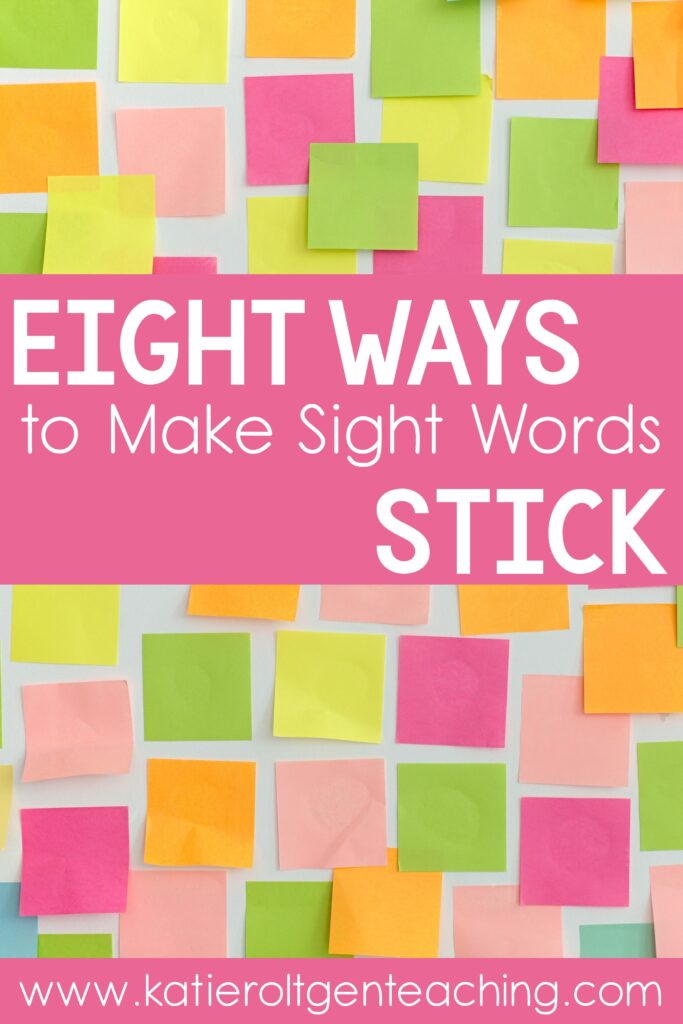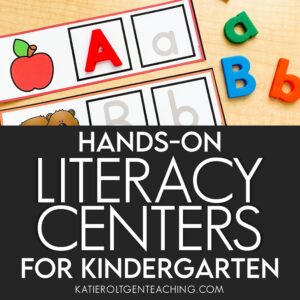
Menu
As teachers, we know that practicing sight words is an important part of developing our students’ literacy skills. But sometimes the sight word practice opportunities can become really repetitive, especially when you’re talking about keeping 5 and 6 year-olds engaged.
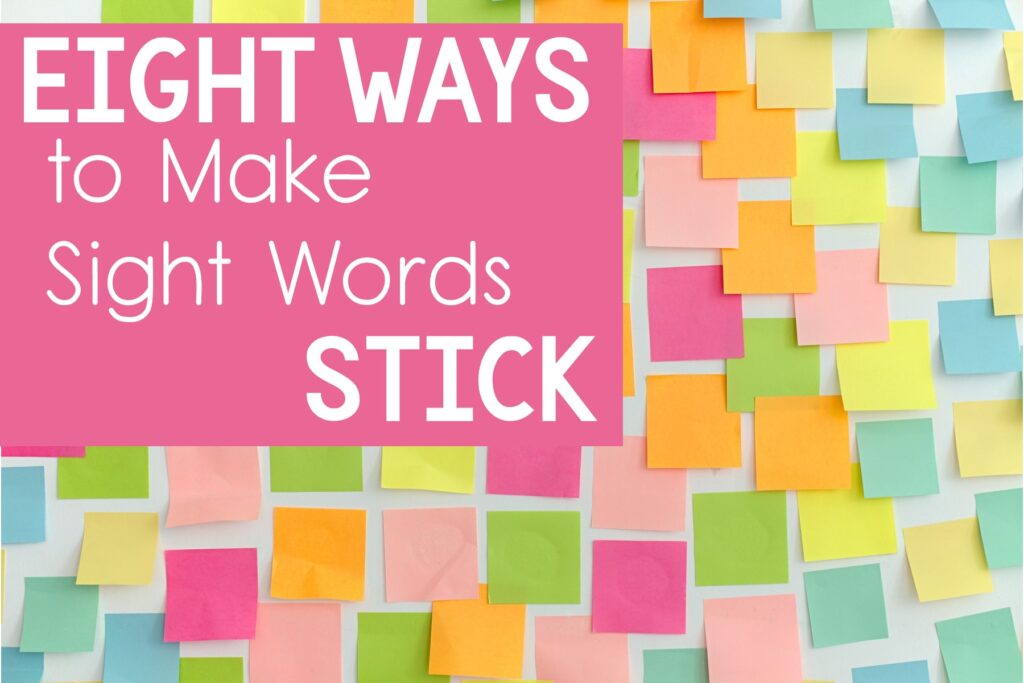
I’ve put together some of my favorite activities and resources to help make sight words stick with your students, so you can spend more time building on their literacy skills instead of reviewing them!
We know the importance of using a multisensory approach while teaching. Kids learn in different ways and when you create those diverse learning opportunities, it sets everyone up to succeed! Here are a few ways you can incorporate touch, sound, and sight!
Whatever supplies you have most of – use them! Locate as many cookie sheets as you can, lay out your play sand, salt, or rice, and have your students use their pointer fingers to write their sight words on the sheet. You could also do this activity with shaving cream or finger paint – just depends how messy you’re okay with getting. 🙂
If your students are all about paint but you want to keep these activities semi-independent, create a sensory bag filled with paint! Take a gallon sized Ziploc bag and fill it with about ¼ cup of paint. Flatten the bag out, tape the top and bottom to a hard surface, and even the paint out in the bag with your palm. Your students can then practice writing their sight words by moving their finger across the paint-filled bag, leaving a tracing of each letter. I’ve also seen this done with sprinkles, bird seed, or even a gel such as aloe vera or hair gel (like this mermaid-themed idea!). Again, whatever supplies you have the most of, use them!
A classroom manipulative that I’ve always had an overabundance of is plastic linking cubes, such as these. You can buy cubes that already have letters on them, but I’ve always just made my own! Using a permanent marker, write a variety of letters on a set of plastic linking cubes or building blocks. You can place the cubes in a larger bin or tub and have the students search for the letters they need to spell their given sight words. Have the students put the blocks together and see how many sight words they can make before they run out of letters. This one’s a twofer – practicing sight words and fine motor skills.
Music is also another interactive way to make sight words stick! You know those tv theme songs that get stuck in your head because they’re just so darn catchy?! That’s the goal here. 🙂
I’ve been a fan of HeidiSongs for over ten years. When I started teaching, I owned a DVD of HeidiSongs that matched our district’s reading series and we used it daily. Now, you can get a monthly subscription and it’s even easier to use!
Here are a few examples you can preview on YouTube: Go, house, she, and eat.
Parents love HeidiSongs too and have often told me that their kiddos are singing the songs at home! I still subscribe to HeidiSongs and used it with my own kindergartener when she was a remote learner this past school year.
Did you know the average student must read a sight word at least 12 times before they can remember it? And the more variation you give during those 12 times, the better! These sight word mini books focus on repetition and recognizing the word in sentences.
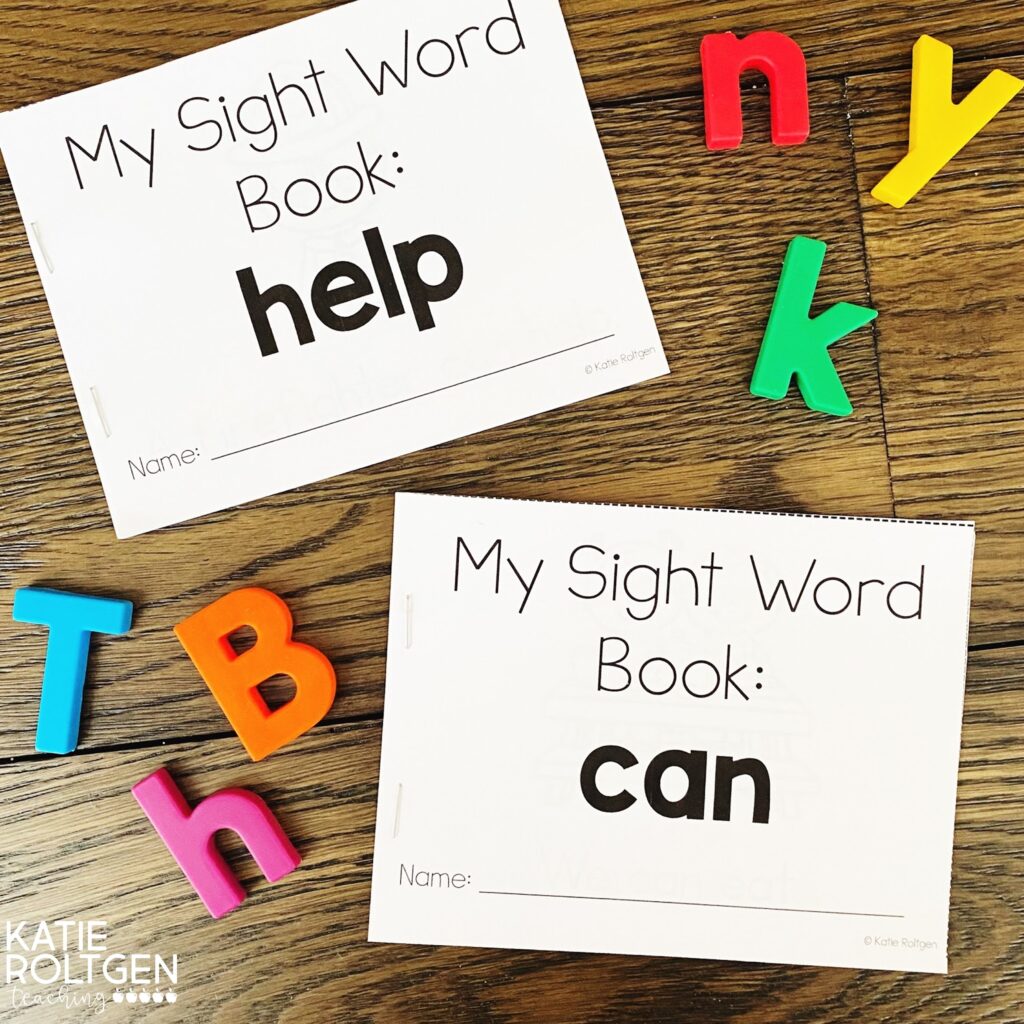
I created these sight word mini books several years ago for my oldest daughter. She absolutely loved having little books that she could pick up and read anytime, color and trace, and take with her wherever we went, even the grocery store. 🙂
My Sight Word Mini Books Bundle includes more than 50 different books and words. If you’d like to check out a free book, you can have my “What” mini book delivered straight to your inbox by filling out the form below!
If you’re looking for other sight word activities that incorporate more writing, this Write and Read no-prep pack comes with 80 different pages, focusing on 40 different words.
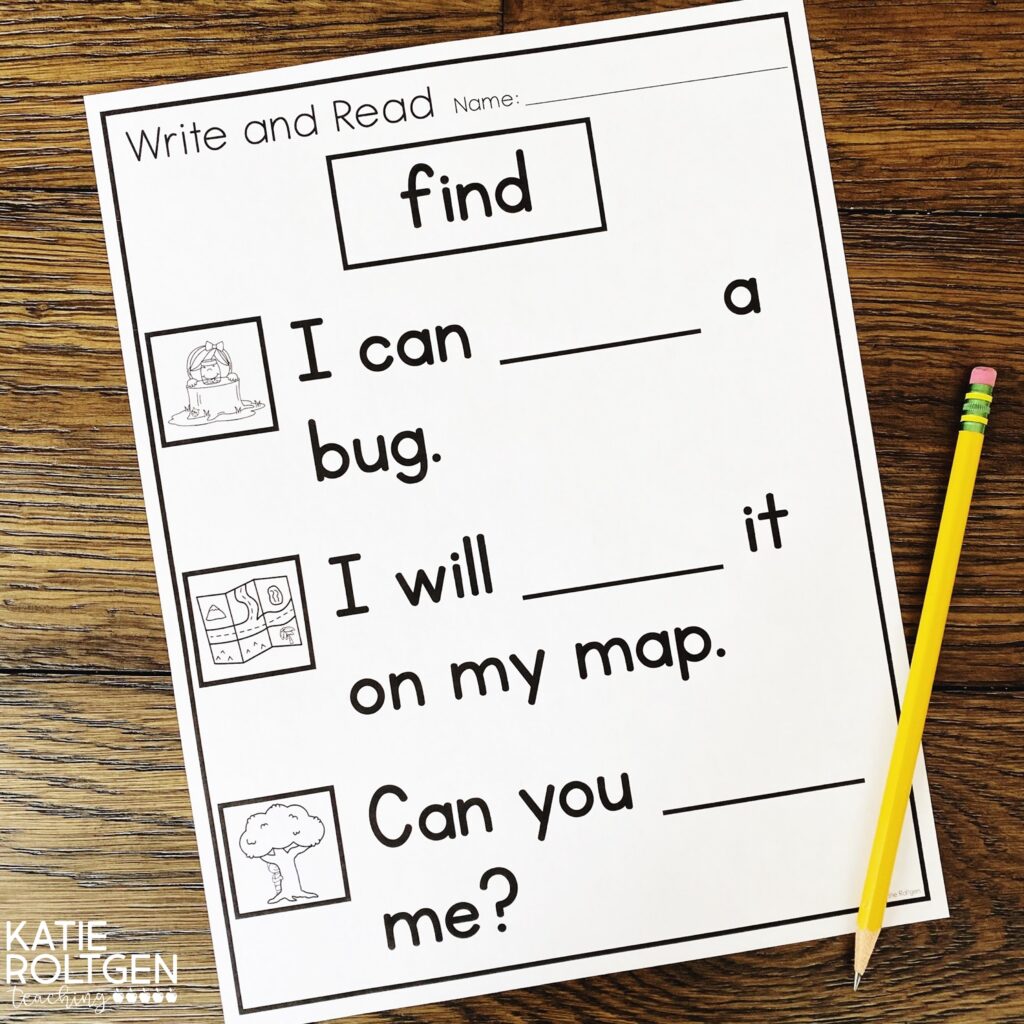
I love these because they incorporate sight word writing with meaningful reading practice. Plus, they require no extra prep on your part!
There are two pages per word – both pages are fill-in-the-blank style, but one version has traceable letters of the sight word, and the other version is completely blank. They’re perfect for whole class, small group, or individual work!
Another no-prep resource is these Read and Sort pages. Just print and your students do the rest – cut, sort, and glue!
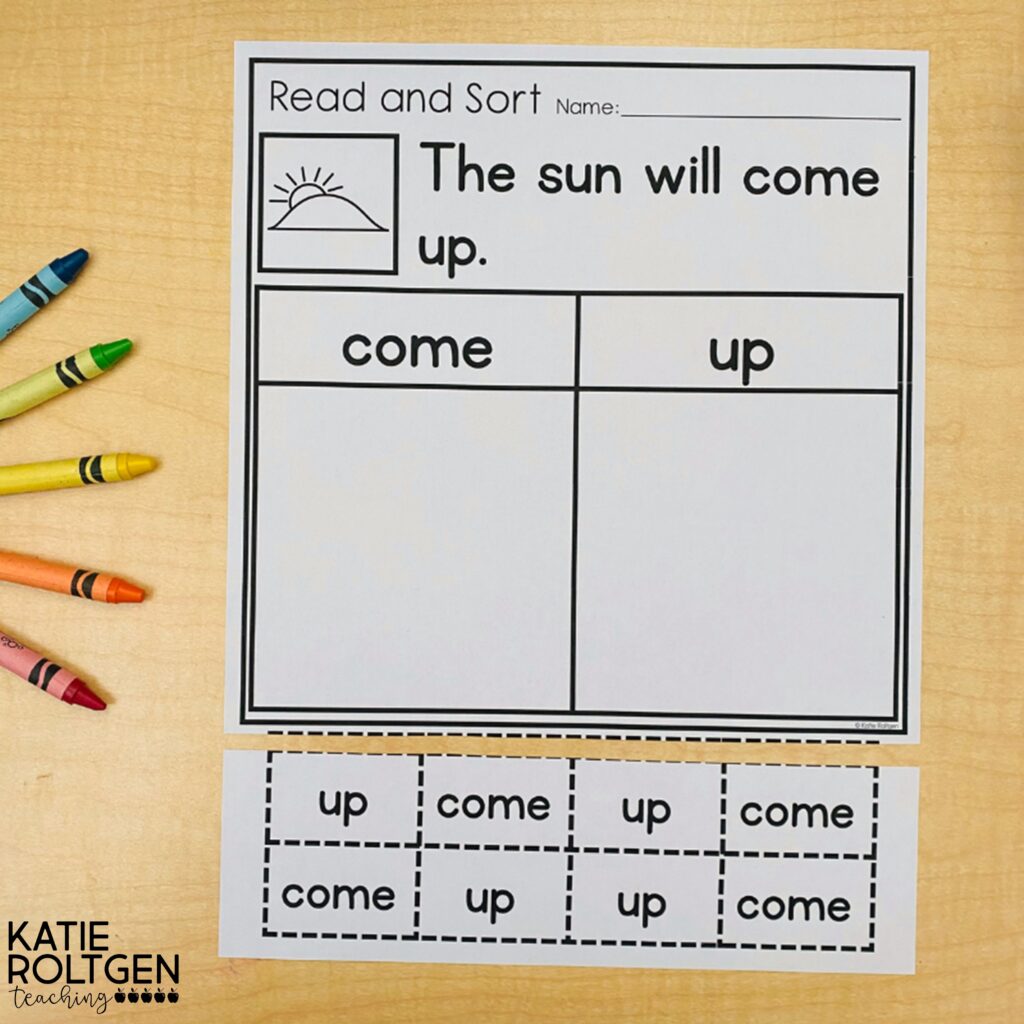
Another way you can keep making sight words practice spontaneous and engaging is mixing up your literacy centers. In addition to the multisensory activities I mentioned during centers, I also have this Trace, Write, & Poke resource that uses jumbo push pins like these. The prep is really easy – just print the pages you need and add the push pins! (Be sure to talk to your students about using the push pins safely! I always kept the pins at my desk and students had to come ask for one.)
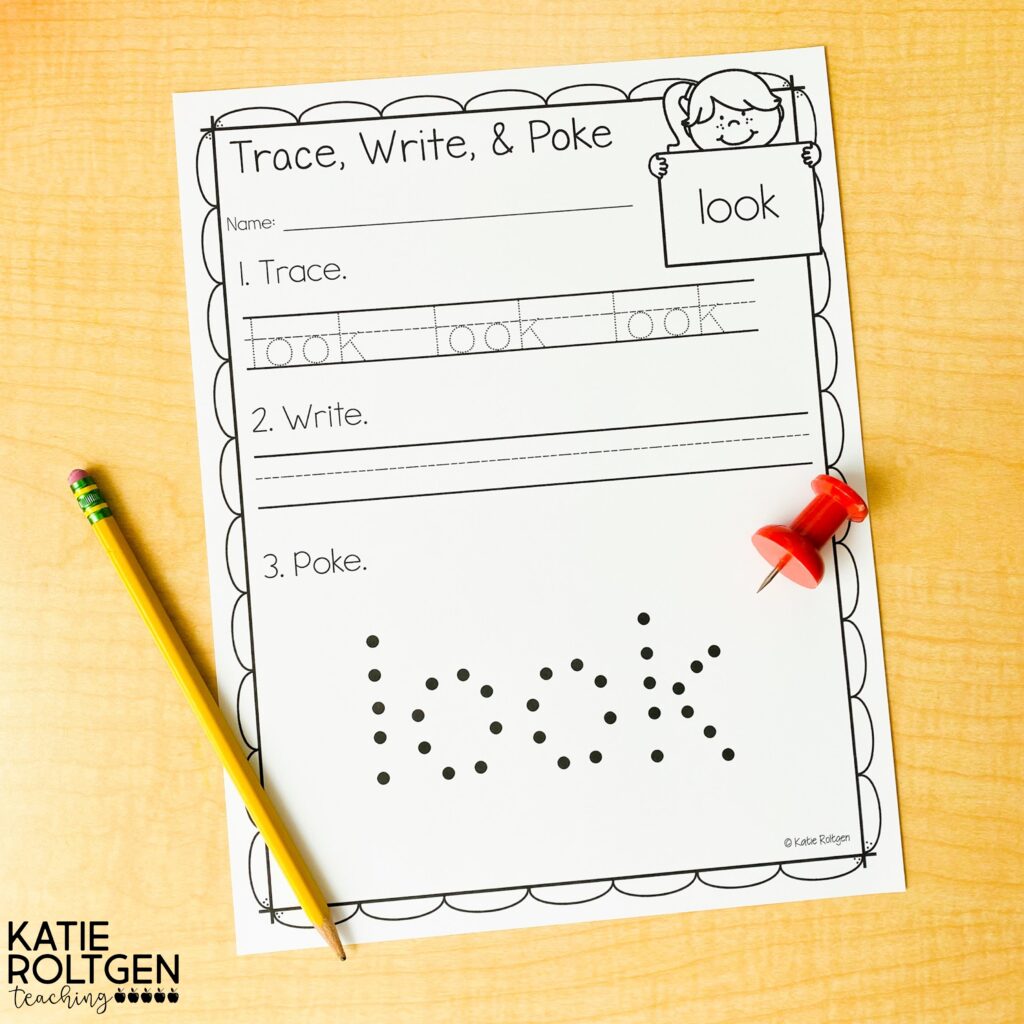
Working with sight words doesn’t have to be repetitive or mundane. Make a list of some of the things your students love to do and think about how you can incorporate sight word practice. It can be as simple as writing words on Jenga blocks and saying the word as they move a piece, or even going outside with sidewalk chalk and writing them as you read them aloud.
The more variety and creativity you bring to sight word practice, the more likely they are to stick! 🙂
